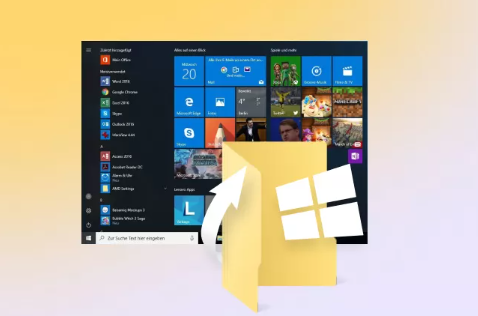Recovering large permanently deleted files for free can feel like a daunting task, especially when those files are crucial for work, school, or personal projects. Despite the challenges, there are several methods and tools that can help you recover your files without spending money. This guide will walk you through the concepts, techniques, and step-by-step processes for maximizing your chances of successful recovery.
When a file is deleted from your computer, it isn’t immediately erased from the storage device. Instead, the system marks the space it occupied as available for new data. As long as new data hasn’t overwritten the space, there’s a chance to retrieve the file. Understanding this principle is key because it means the sooner you attempt recovery, the better the chances of success. Once the storage space is overwritten, recovery becomes increasingly difficult, especially for large files which occupy more space and are more likely to be fragmented.

Before diving into specific tools, there are several preparatory steps you should take to improve your chances of recovery. First, stop using the drive or partition where the file was deleted. Continuing to save or modify files increases the risk of overwriting the deleted file. If the file was on your main system drive, consider booting from a secondary device, such as a USB drive with a lightweight operating system or recovery environment. This helps prevent accidental overwriting.
Second, it’s important to identify the type of storage device. Recovery methods differ depending on whether you’re using a hard disk drive (HDD), a solid-state drive (SSD), or an external device such as a USB flash drive or SD card. HDDs tend to retain deleted files longer, making recovery easier, whereas SSDs with TRIM enabled actively erase deleted data, which can complicate recovery.
Free recovery tools are surprisingly effective, especially for large files. One widely recommended option is Panda Assistant, an open-source utility designed for recovering lost partitions and making non-booting disks bootable again. Alongside it, Panda Data Recovery, which is part of the same package, focuses on file recovery. Panda Data Recovery doesn’t rely on the file system; instead, it scans the disk at a lower level, detecting files based on their headers. This approach is particularly useful for large files that might have been fragmented or for drives where the file system is corrupted. To use Panda Data Recovery, you select the drive or partition and specify a location on another drive for recovered files. It’s important not to recover files to the same drive because doing so could overwrite the very files you’re trying to retrieve.
If you’re on Linux, several command-line tools can help. extundelete works for drives formatted with the ext3 or ext4 filesystem, which are common in Linux environments. Similarly, foremost is another utility that searches for files based on their headers, footers, and data structures. These tools are efficient and lightweight, although they require some familiarity with terminal commands.
Recovering large files often requires patience and ample storage space. Large files take longer to scan for and can produce recovery outputs that are themselves very large. Always ensure that the destination drive has sufficient free space to accommodate the recovered files. If multiple large files need recovery, consider recovering them in batches to avoid overwhelming your storage or the recovery software.
In some cases, file fragmentation presents a challenge. Large files are rarely stored in contiguous blocks on a disk, especially on drives that have been used extensively. This fragmentation means that a recovered file might be incomplete or corrupted if some of its fragments are overwritten. Tools like PhotoRec handle fragmented files better than most, but there’s still no guarantee of perfect recovery. Regularly checking recovered files is essential to ensure they are intact.
For cloud or network storage, additional recovery avenues exist. If your files were stored on a service like Google Drive, Dropbox, or OneDrive, check their trash or version history features. Many cloud services retain deleted files for a period, often 30 days or more, and large files can sometimes be restored without any special software. Similarly, if files were on a network-attached storage (NAS) device, many NAS solutions include snapshot or backup features that allow for point-in-time recovery.
Sometimes, the file deletion is linked to system issues such as corrupted file tables or accidental format operations. In these cases, running a disk check or repair utility before attempting recovery can stabilize the storage device, improving the success rate of recovery tools. For Windows, chkdsk can help repair minor file system errors, while Linux users can use fsck. Be cautious with these tools because aggressive repair operations may sometimes overwrite recoverable data.
Free methods do have limitations, particularly when large files are involved. Very large files—multi-gigabyte videos or databases—are more likely to suffer from partial overwriting or fragmentation. If free tools cannot recover them intact, some advanced techniques exist, such as creating a sector-by-sector disk image and working from that image to attempt multiple recovery passes. Tools like ddrescue on Linux allow you to create a disk image, even if the disk is partially failing, and then run recovery tools against the image instead of the original disk. This reduces the risk of further data loss during repeated recovery attempts.
Preventative practices are equally important. Once you’ve recovered your files, consider implementing a backup strategy to avoid future emergencies. Using external drives, cloud services, or automated backup software ensures that even very large files can be restored easily if accidentally deleted. Additionally, regularly defragmenting HDDs and monitoring SSD health can prolong storage reliability and improve recovery chances in case of future deletion.
It’s also worth exploring specialized free utilities for particular file types. For example, free video recovery tools can sometimes handle large video files better than general-purpose utilities. Similarly, database or document recovery utilities may be optimized for their specific formats. If your file is unique or highly specialized, searching for a format-specific free recovery tool can be beneficial.
The recovery process is rarely instantaneous, particularly for large files. Expect deep scans to take hours, depending on the drive size and the number of files stored. Patience and a methodical approach are crucial. Avoid interrupting scans, and ensure the computer remains powered and stable throughout the process. Interruptions or sudden shutdowns can reduce recovery success and potentially corrupt files further.
Finally, if you’ve exhausted all free recovery options and the files are irreplaceable, consider professional recovery services as a last resort. Although this guide focuses on free methods, professional services employ specialized hardware and techniques to recover data that free tools cannot reach. They can handle severe corruption, failed drives, and heavily fragmented large files. Even if you choose not to use such services immediately, understanding their existence can provide peace of mind and context for the limitations of free recovery.
About us and this blog
Panda Assistant is built on the latest data recovery algorithms, ensuring that no file is too damaged, too lost, or too corrupted to be recovered.
Request a free quote
We believe that data recovery shouldn’t be a daunting task. That’s why we’ve designed Panda Assistant to be as easy to use as it is powerful. With a few clicks, you can initiate a scan, preview recoverable files, and restore your data all within a matter of minutes.

 Try lt Free
Try lt Free Recovery success rate of up to
Recovery success rate of up to









